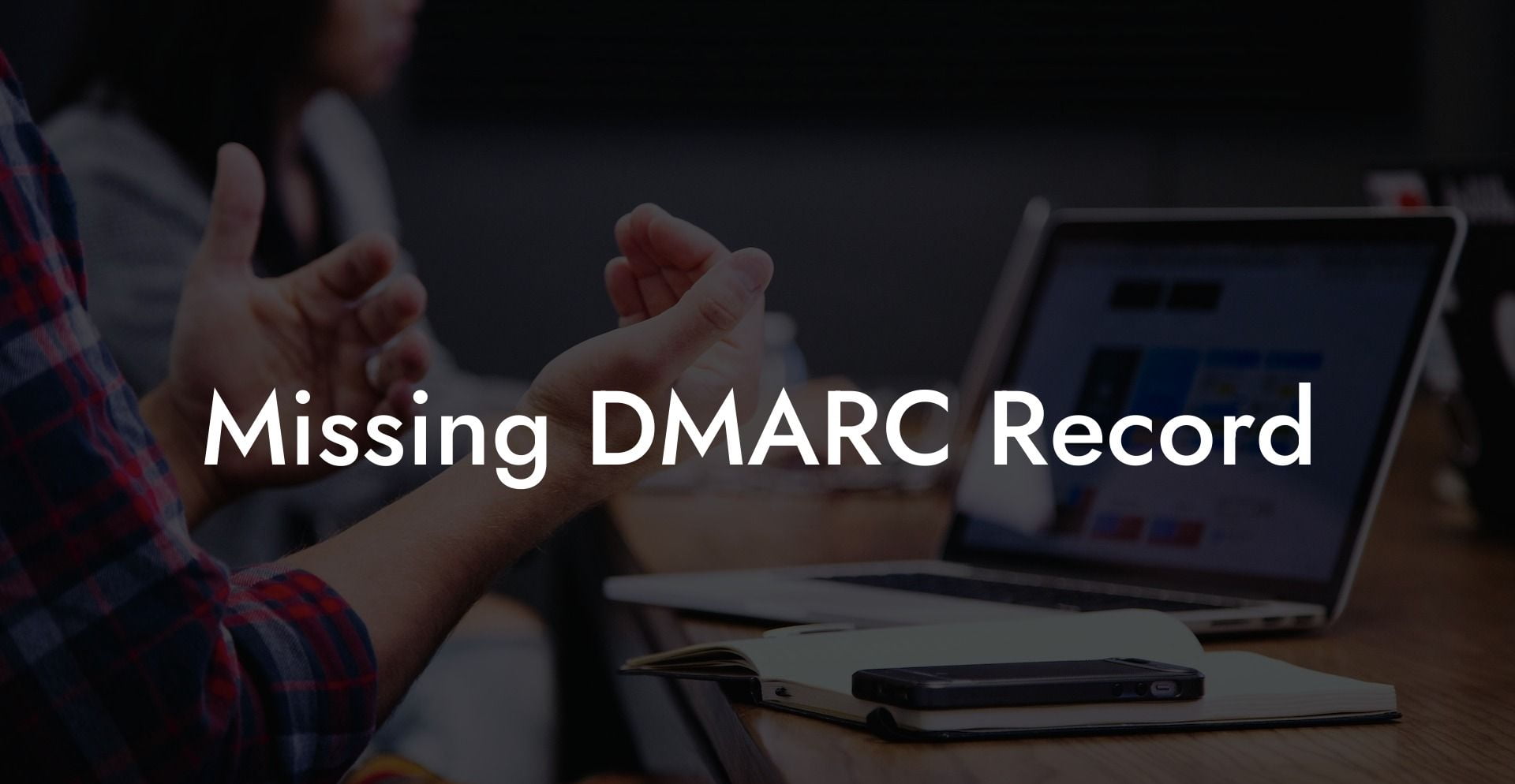In the world of cybersecurity, small oversights can lead to devastating consequences, and one such oversight often encountered is the missing DMARC record. By overlooking DMARC, businesses leave themselves exposed to a wide range of cyber attacks, including those that impersonate their domain to conduct targeted phishing campaigns. In this article, we'll explore the importance of DMARC, the consequences of a missing DMARC record, and how to set up this crucial piece of email security correctly.
Missing DMARC Record Table of Contents
Why is a DMARC Record Important?
What is DMARC?
Domain-based Message Authentication, Reporting & Conformance (DMARC) is an email authentication protocol that builds upon two existing standards: Sender Policy Framework (SPF) and DomainKeys Identified Mail (DKIM). DMARC is designed to give domain owners the ability to monitor and control the use of their domain in email, protecting both themselves and their recipients from cyberattacks like phishing and spoofing.
Why is a DMARC Record Important?
Protect Your Data Today With a Secure Password Manager. Our Top Password Managers:
A DMARC record is crucial for several reasons:
- Prevent Domain Spoofing: By implementing DMARC, you protect your domain against unauthorized use or spoofing, which helps safeguard your brand reputation and maintain customer trust.
- Protect Your Recipients: By enforcing DMARC, you protect your recipients from receiving phishing emails pretending to be from your domain. This defense helps maintain customer trust and prevents them from becoming victims of cyberattacks.
- Enhance Deliverability: Emails from domains with DMARC have a higher likelihood of being delivered to the recipients' inboxes, increasing engagement and improving your email marketing campaigns' effectiveness.
- Gain Visibility: DMARC provides valuable insights into your email ecosystem by delivering reports on both legitimate and malicious email activity involving your domain.
Consequences of a Missing DMARC Record
Without a DMARC record in place, a domain is at an increased risk of cyberattacks. Some of the consequences businesses may experience include:
- Brand Reputation Damage: Phishing attacks can leave customers feeling distrustful of a company. If a cybercriminal successfully impersonates your domain to conduct an attack, customers may associate the attack with your business and lose faith in your brand.
- Financial Losses: A successful phishing attack can result in significant financial losses for individuals and businesses. By leaving your domain open to attack, you risk not only your own assets but potentially those of your clients and customers as well.
- Legal and Regulatory Issues: Failure to protect your domain from phishing attacks can leave you vulnerable to legal and regulatory consequences. Protecting customer data is not only practical but required by data protection regulations like the GDPR.
Setting Up DMARC for Your Domain
To implement DMARC for your domain, you need to complete four steps:
- Establish SPF and DKIM Records: DMARC builds on these two protocols, so they must be in place before you can begin the DMARC process.
- Create a DMARC Record: This step involves creating a DMARC policy with specified configurations, such as alignment modes, actions to take upon policy violation, and more.
- Publish Your DMARC Record: Add the DMARC record to your domain's DNS as a TXT record.
- Monitor and Analyze DMARC Reports: DMARC provides valuable insights into your email ecosystem via reports sent to a specified recipient. Regularly analyze these reports to identify issues, adjust your DMARC policy as needed, and ensure comprehensive security.
Missing DMARC Record Example:
Imagine a company without a DMARC record in place. A cybercriminal spoofs the company's domain and sends out phishing emails to its customers. As the company has no DMARC record, the emails successfully bypass prevention protocols and reach the customers, resulting in multiple accounts being compromised.
If the company had a DMARC record in place, the phishing emails would have been blocked, either by being sent to the recipients' spam folders or rejected outright. The DMARC record would then send a report detailing the fraudulent activity, allowing the company to take appropriate action to prevent further attacks.
By now, it should be abundantly clear that a missing DMARC record presents significant risks to businesses and their customers. Implementing DMARC is a crucial step in securing your domain, protecting your recipients from phishing attacks, and preserving your brand reputation. Don't leave your domain vulnerable – set up your DMARC record today and ensure a robust defense against cyber threats. If you found this article helpful, be sure to share it with your network and explore the other in-depth guides on Voice Phishing.
Protect Your Data Today With a Secure Password Manager. Our Top Password Managers:















